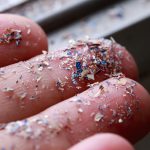
Intermittent fasting is all the rage due to the lengthy list of health benefits associated with this style of eating. Now, a new, small study suggests that one type of intermittent fasting — early time-restricted eating — may be key for preventing type 2 diabetes in people who are at high risk for the blood sugar disease. The study included 10 people with prediabetes and obesity. Prediabetes refers to when blood sugar levels are higher than normal but not high enough to be defined as diabetes. Obesity is also considered a major risk factor for type 2 diabetes. Folks in the study ate 80% of their daily calories before 1 p.m (early time-restricted feeding) or half of their calories after 4 p.m (usual eating) for one week, and then they switched to the opposite group during the second week. Early time-restricted feeding reduced blood sugar fluctuations and decreased the time that blood sugar was above normal levels throughout the day, and this was independent of any weight loss. “There is a large body of evidence that eating early in the day is beneficial for metabolic health, and many people experience weight loss even though their calories may not be restricted, but it was unclear whether these benefits were related to weight loss or independent, and this study suggests they are independent,” said study author Dr.… read on > read on >
























-300x200.jpg)













